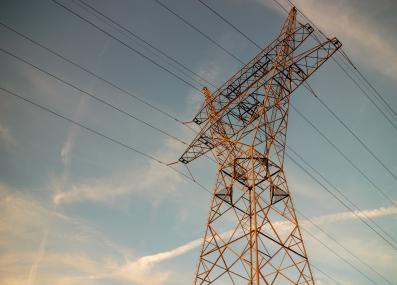Have a question?
How much extra electricity would we need to switch every gas-powered car for an electric vehicle?
A full transition to EVs will demand thousands of terawatt-hours of electricity—but with smart planning for how and when to charge these vehicles, that demand can mostly be met with power plants we’ll be building anyway.
January 29, 2025
By 2035, as countries implement more ambitious climate policies, electric vehicles (EVs) could account for 8 to 10 percent of global electricity demand—nearly 20 times the share they consume today.1 If all cars were swapped for electric models, that demand would increase even more. Various studies have estimated that an all-electric vehicle fleet would account for between 13 percent and 29 percent of the United States’ total electricity use.2 And if all car purchases made in the U.S. after 2035 were electric, the electricity needed to charge those vehicles could reach over 900 terawatt-hours by 2050.3 (Today, Americans consume roughly 4,000 terawatt-hours of electricity per year.4)
Luckily, that doesn’t mean we necessarily need vast numbers of new power plants to provide EV charging. What we need to watch, explains Jessika Trancik, a professor at the MIT Institute for Data, Systems, and Society, is EVs’ impact on the demand peak. “What you're trying to avoid here is a scenario where everyone acts in unison to plug in,” she says, “especially at times when other demands for electricity are peaking.”
Many tasks, like cooking breakfast or turning on the air conditioner on a hot day, need to happen at a specific time. This leads to times of “peak demand,” typically on hot summer afternoons, which our power grid has to be built to meet. At these times, power plants use their full capacity.
The rest of the time, we have plenty of power for what we need to accomplish, plus a nice cushion of spare capacity if demand were to suddenly spike. If we plan for it, a full transition to EVs could mostly take advantage of that spare capacity, because unlike an air conditioner, an EV can be charged conveniently at any time the vehicle is parked.
But that means, Trancik says, that we need to install chargers in the places people regularly park. She and her team have studied driving patterns to identify places where large numbers of people reliably park at different times, comparing this timing with the grid’s overall demand for electricity. The idea is to make chargers available to people at the most convenient times and places to charge their cars while spare electricity is plentiful.
One of the best locations, Trancik says, is the workplace. Installing ample chargers at workplaces will allow people to charge during the day, instead of in the evening when demand for electricity is peaking. Workplace charging also offers the benefit of using abundant solar energy while the sun is shining—electricity that might otherwise be wasted.5
Since not every day is a workday, it’s also important to make chargers available in places where people park when they are at home, whether that’s in public street parking, or in a parking lot, garage or driveway. Home chargers can be equipped with delayed charging functions, so when people do plug in at home, their chargers can spread out the demand for electricity overnight. As Trancik and her team found in their research, this delayed charging will not stop people from getting all the charge they need for the next day’s travel.
Once charging infrastructure is set up in the right places, financial incentives, like making electricity cheaper at low-demand times, could further nudge people to plug in when electricity is plentiful.
None of this will happen on its own, however. If we do not put chargers in strategic places, many people without off-street parking at home will have limited options for adopting and charging an EV. Meanwhile, those who do have off-street parking will charge their EVs right when they pull into their driveways at the end of the workday. Without further planning, if every person who now owns a gas car switched to an electric model, peak power demand in the U.S. could rise by 20% or more.5,6
That really would require many new power plants—and avoiding that Wild West scenario is easier said than done.
“Getting everything to align can be, of course, challenging in the real world,” says Trancik. “To actually implement this, you need to find ways to incentivize the installation of chargers at the workplace, and also to provide these programs and incentives for that staggered home charging. And that's sometimes not the easiest thing to do on the ground, in part because you have a lot of different decision makers involved.”
Most American drivers are also accustomed to parking in a garage at home or on the street, refilling their gas tanks in a few minutes whenever they run low, and rarely if ever worrying about whether their car will have enough fuel. If we install enough chargers in convenient places, drivers will likely find that EVs are an easy switch, because apart from rare exceptions when making long-distance trips, their cars can be charged where they are already parked anyway. But if we fail to install these chargers, a switch to EVs will require some significant behavioral changes—a major barrier to adoption. And if we want to amplify the climate benefits of switching to EVs, we will also need to continue retiring climate-warming gas and coal plants and building more clean energy, like solar and wind paired with batteries. (It would also be beneficial to boost public transportation, walking and biking options, says Trancik, which have far less climate impact even than EVs when people find they are convenient for daily travel.)
If we do this right, a transition to EVs could do a great deal to slow climate change, without badly straining the grid. Today, there are over 250 million light-duty vehicles in the U.S.,7 emitting over one billion tons of climate-warming CO2 each year: more than 15% of the United States’ total climate pollution.8 EVs can dramatically cut this major source of climate warming. Depending on the model and driving conditions, a midsize EV’s contribution to climate change is about 30-60% lower than a comparable gas car.9
“There's a difference between saying, this is a future that we could work toward, versus this is what will happen,” says Trancik. “What will happen is up to all of us, and will depend on the decisions that we make.”
Thank you to David Maffucci of Charlotte, North Carolina, for the question.
Submit your own question to Ask MIT Climate
Get the latest from Ask MIT Climate monthly in your inbox
1 These figures are taken from the International Energy Agency's "Stated Policies Scenario," which analyzes climate policies already put in place around the world, and "Announced Pledges Scenario," which assumes governments will meet the climate goals they have pledged themselves to. See, International Energy Association: "Global EV Outlook 2024: Outlook for battery and energy demand." 2024.
2 Yip, Arthur, et al., "Highly Resolved Projections of Passenger Electric Vehicle Charging Loads for the Contiguous United States." National Renewable Energy Laboratory, 2023.
3 International Energy Association: "Global EV Outlook 2024: Outlook for battery and energy demand." 2024.
4 U.S. Energy Information Administration: "Use of electricity." Updated December 18, 2023.
5 Needell, Zachary et. al., "Strategies for beneficial electric vehicle charging to reduce peak electricity demand and store solar energy." Cell Reports Physical Science, Volume 4, March 2023, doi:10.1016/j.xcrp.2023.101287.
6 Muratori, Matteo, "Impact of uncoordinated plug-in electric vehicle charging on residential power demand." Nature Energy, January 2018, doi:10.1038/s41560-017-0074-z.
7 Bereau of Transportation Statistics, "Number of U.S. Aircraft, Vehicles, Vessels, and Other Conveyances."
8 U.S. Environmental Protection Agency, Office of Transportation and Air Quality: "U.S. Transportation Sector Greenhouse Gas Emissions, 1990-2022." May 2024.
9 Miotti, Marco, et al., "Personal vehicles evaluated against climate change mitigation targets." Environmental Science and Technology, Vol. 50, Issue 20, 2016, doi:10.1021/acs.est.6b00177. Data updated, made accessible and interactive at carboncounter.com, MIT Trancik Lab.








